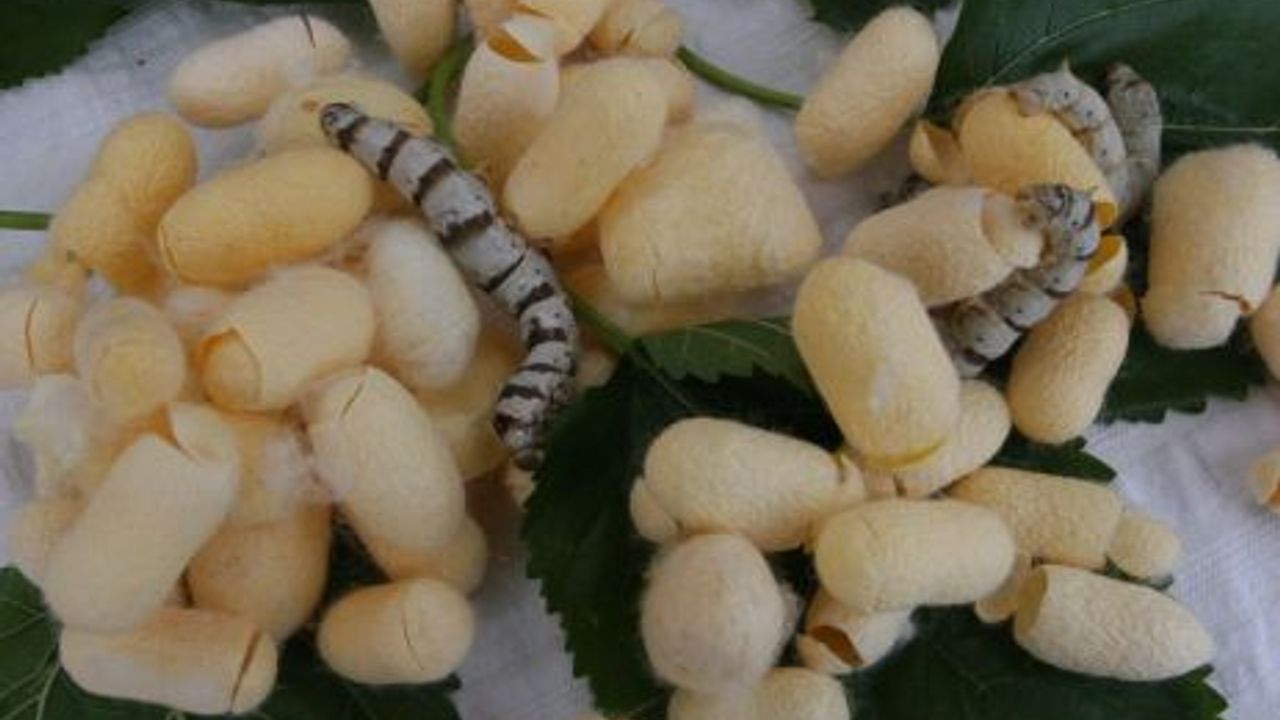Hasan KARLITAŞ
Many of us have childhood memories including silkworms, mulberry trees, silk cocoons. Until very recently, silkworm-breeding and extracting silk from its cocoon was among the most important traditions of Cyprus. Unfortunately, due to changing conditions, this important production and occupation field changed context. Nowadays, even though production of silk cocoon still survives as a hand-made, art-based production based on thousands of different patterns, it is worrying that the rate of production is declining.
There are people who continue to be passionately engaged in silkworm-breeding, which is believed to have started in Cyprus during the Ottoman period. Seeing the presence of people still engaged in this occupation that is part of the Cypriot culture gives hope for the survival of the cultural heritage and the future.
İbrahim Batıgün, a teacher of literature at Cengiz Topel Technical and Industrial Vocational High School, is among the ones who contribute to the survival of this occupation. Starting as a hobby with 10 silkworms during second grade of primary school, İbrahim Batıgün is still engaged in it. The subject of today’s article is about the research conducted by my friend İbrahim on Silkworm and Silk Cocoon.
Silkworm-breeding is part of our culture
According to some historians, silkworm-breeding can be traced back to 6000BCE. Considering the time until the 21th century, we can see for how long it has survived.
According to the records, the motherland of silkworms is China. Some historians say that silkworm-breeding is done in India. According to a legend, the wife of the Chinese Emperor She-Lhing-She came across silkworm cocoons on a mulberry tree as she was taking a stroll at the garden of the palace and this was the first time that a human hand touched the cocoons.
As it was understood that silk was a valuable weaving material, its raw material silk cocoon was banned from exported from Chinese borders for a long time.
Once upon a time, silkworm-breeding was the means of living for many people in Turkey. I heard that it was very commonly practiced in the city of Bursa. Cocoons produced were sold at the place called “Kozahan”. I visited this place last year but could not find what I was looking for. Silkworm-breeding began disappearing here as well.
Back in the days, silk produced from silkworms nearly in every household in Cyprus were used for the dowries of girls. Silkworms are rarely bred anymore in Cyprus and it is using its value. Mulberry trees, which the silkworms feed on, get their share of tree massacre in our country. You might not be able to find the same mulberry tree in its place after a year. Silkworms mean mulberry trees; if there is no tree, you cannot breed them as they only feed on the leaves of the mulberry.
Even though I started silkworm-breeding as a hobby, it soon became something more important as the number of silkworms increased. I try to continue doing this job that requires a lot of labour under very hard conditions in Cyprus. This job, which is both hard and joyful, is a means to relax for me. The sound that the silkworms make when they are eating puts one in a dream state.
The hardest part is finding mulberry leaves, plus, there is very low demand for the cocoons that I produce. In spite of all the problems that I face, I do my best to continue this job that has cultural value.
Silkworm-breeding is a pleasurable occupation. I suggest that everyone gets involved in it to contribute to the continuation of this valuable heritage.







